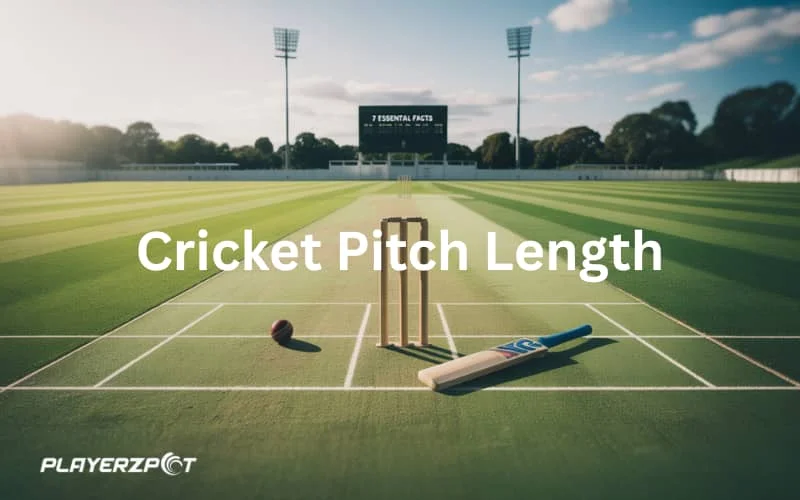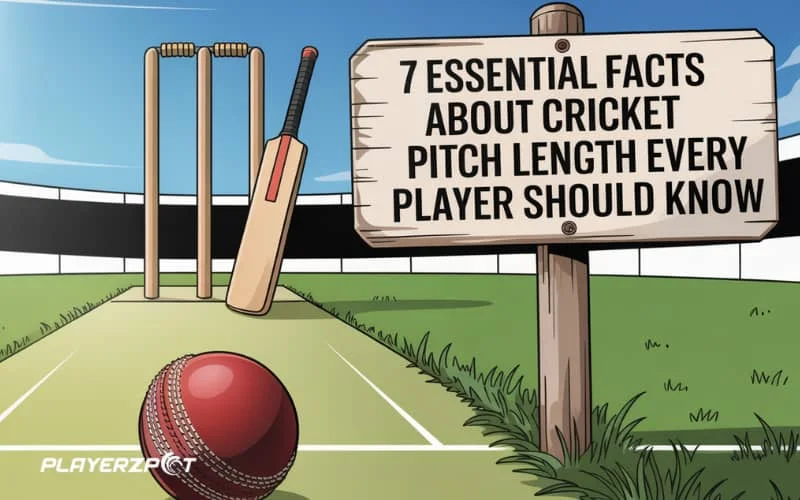Cricket is a sport rich in tradition, strategy, and precision. Among its many components, the cricket pitch length plays a vital role in shaping the game. From bowling and batting to field placement and tactics, the exact measurement of the pitch is central to Playerzpot ensuring fair play and consistent performance. For both beginners and experienced players, understanding the cricket pitch length is essential to mastering the sport and improving on-field skills.
In this article, we will explore seven essential facts about cricket pitch length that every player should know. By understanding these details, you can gain a deeper appreciation for the game and sharpen your performance.
Standard cricket pitch length
The first fact every player should understand is the official standard cricket pitch length. In professional matches governed by the International Cricket Council (ICC), the length of the pitch is 22 yards, which is equal to 20.12 meters or 66 feet. This length has been consistent for decades and is considered the foundation of the sport. The width of the pitch is 10 feet, ensuring enough space for both batsmen and bowlers to operate effectively.
The standard measurement is not just arbitrary but carefully chosen to create a balance between bat and ball. If the cricket pitch length were shorter, batting would become much easier, giving the batsmen more advantage. If it were longer, bowlers would dominate excessively, making the game less entertaining. Thus, the official length provides the perfect balance that has helped cricket maintain its unique identity.
Cricket pitch length in junior matches
Another important fact to know is that cricket pitch length is not the same at all levels of the game. For younger players, particularly under-13 and under-15 categories, shorter pitches are used to match their physical abilities. For example, in under-11 cricket, the pitch length is typically around 16 yards, while under-13 matches may use a pitch length of 19 yards.
This adjustment ensures that young players can develop their batting, bowling, and running skills without being overwhelmed by the challenges of a full-length pitch. Coaches and cricket boards around the world emphasize age-appropriate pitch dimensions to promote skill development and a smoother transition into professional-level cricket.
The significance of crease markings
While most discussions about cricket pitch length focus on the overall 22-yard distance, the markings within this length are equally important. The popping crease, bowling crease, and return crease each play a specific role in determining fair play.
The popping crease, located 4 feet in front of the stumps, is where the batsman stands and where the bowler must land the ball for it to be legitimate. The bowling crease is aligned with the stumps, and the return crease ensures the bowler stays within the legal area during delivery. These markings, though only a small fraction of the total cricket pitch length, influence every ball delivered and every run scored.

Impact of cricket pitch length on bowlers
The cricket pitch length directly impacts how bowlers approach their deliveries. Fast bowlers, for instance, use the full 22 yards to generate speed, bounce, and movement off the pitch. The longer distance allows them to create rhythm in their run-up and surprise the batsman with pace.
On the other hand, spin bowlers rely more on flight, turn, and deception. For them, the cricket pitch length provides just enough room to showcase their skills by making the ball deviate off the surface. Even minor variations in pitch conditions, such as dryness or grass cover, interact with the standard length to influence how the ball behaves. Understanding how to adapt to these changes is a crucial skill for any bowler.
Impact of cricket pitch length on batsmen
Batsmen also feel the effects of cricket pitch length in multiple ways. The 22-yard stretch between the stumps dictates how quickly they must react to deliveries. For example, a fast bowler delivering at 140 km/h gives a batsman less than half a second to decide how to respond.
The pitch length also plays a role in running between the wickets. Every time batsmen complete a run, they cover the full 22 yards. This demands fitness, awareness, and sharp judgment to avoid run-outs. Understanding how to pace themselves across the cricket pitch length is key to turning singles into doubles and doubles into triples.
Variations in cricket formats
Though the standard cricket pitch length remains the same in all formats, its impact varies across Test matches, One Day Internationals (ODIs), and Twenty20 (T20) cricket. In Test cricket, where matches last up to five days, the length combines with wear and tear of the surface to create unique challenges as the game progresses. Bowlers may find more assistance from cracks and rough patches, while batsmen must adjust to uneven bounce.
In ODIs and T20s, the pitch is fresher and often more batting-friendly, making stroke play more dominant. However, even in these formats, the standard cricket pitch length remains the foundation that balances bat and ball. Players who adapt their strategies to suit the format gain a competitive edge.
Maintenance and preparation of the pitch
The cricket pitch length is fixed, but how it is maintained can vary greatly from one venue to another. Groundsmen play a vital role in preparing the surface. Rolling, watering, and cutting the grass all influence how the ball behaves over the 22 yards.
A dry pitch may offer more assistance to spinners, while a green pitch with extra grass helps fast bowlers. Though the length never changes, the way the surface is prepared adds layers of strategy to the game. Teams often plan their playing XI based on pitch reports, knowing how important the surface will be in dictating the match outcome.
Conclusion
The cricket pitch length is far more than just a measurement on the field. It is a carefully designed standard that ensures fairness, balance, and excitement in the sport. From young cricketers learning the basics to international stars mastering their craft, every player must respect and understand the role of the 22-yard pitch.
By knowing the standard length, the variations for juniors, the importance of crease markings, and the way it influences both bowlers and batsmen, players can develop a deeper appreciation of the game. Furthermore, recognizing how the length interacts with pitch conditions and formats highlights just how central it is to cricket’s beauty and unpredictability.
Whether you are a beginner stepping onto the field for the first time or an experienced player aiming to refine your skills, understanding cricket pitch length is an essential step toward mastering the sport.








